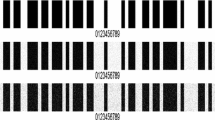Summary
Detecting and estimating the number and locations of multiple change points is difficult. Sometimes a single-change method can locate multiple shifts by recursively dividing the data at the most likely location of a single shift. However, a single-change method may not detect the presence of multiple changes and may not accurately estimate a division point when multiple changes are present.
The Schwarz information criterion offers a direct way to estimate the number of shifts, but the locations maximizing the likelihood function must be known for each possible number of shifts. The latter task is computationally infeasible for a realistic amount of data.
This paper proposes a general algorithm for estimating the likelihood-maximizing locations and gives an example in which multiple changes are detected. The performance is evaluated using simulation and the proposed method is shown to be superior to the recursive application of a single shift procedure.


Similar content being viewed by others
References
Barry, Daniel and Hartigan, J. A. (1993). “A Bayesian analysis for change point problems.” Journal of the American Statistical Association 88, 309–319.
Chernoff, H. and Zacks, S. (1964). “Estimating the current mean of a normal distribution which is subjected to changes in time.” Annals of Mathematical Statistics 35, 999–1028.
Dempster, A. P., Laird, N. M., and Rubin, D. B. (1977). “Maximum likelihood from incomplete data via the EM algorithm.” Journal of the Royal Statistical Society B (Methodological) 39, 1–38.
Krishnaiah, P. R. and Miao, B. Q. (1988). “Review about estimation of change points.” in Handbook of Statistics, Vol. 7, P. R. Krishnaiah and C. R. Rao eds., p. 375–402. Elsevier Science.
Lai, T. L. (1995). “On some filtration procedures for jump Markov processes observed in white Gaussian noise.” Annals of Statistics 20, 2153–2160.
Quandt, R. E. (1958). “The estimation of the parameter of a linear regression system obeying two separate regimes.” Journal of the American Statistical Association 53, 873–880.
Quandt, R. E. (1960). “Tests of the hypotheses that a linear regression system obeys two separate regimes.” Journal of the American Statistical Association 55, 324–330.
Quandt, R. E. (1972). “A new approach to estimating switching regressions.” Journal of the American Statistical Association 67, 306–310.
Schwarz, Gideon (1978). “Estimating the dimension of a model.” Annals of Statistics 6, 261–464.
Stoumbos, Z. G.(1999). “The detection and estimation of the change point in a discrete-time stochastic system.” Stochastic Analysis and Applications 17, 637–649.
Vostrikova, L. J. (1981). “Detecting ‘disorder’ in multidimensional random processes.” Soviet Mathematics Doklady 24, 55–59.
Woodall, W. H. (1999) “Research issues and ideas in statistical process control.” Journal of Quality Technology 31, 4, p. 376–386.
Yao, Y. (1988). “Estimating the number of change-points via Schwarz criterion.” Statistics & Probability Letters 6, 181–189.
Yashchin, E. (1995). “Estimating the current mean of a process subject to abrupt changes.” Technometrics 37, 311–323.
Zacks, S. (1983). “Survey of classical and Bayesian approaches to the change point problem: fixed sample and sequential procedures.” Recent advances in statistics, 245–269, New York: Academic Press.
Zacks, S. (1991). “Detection and change-point problems.” In Handbook of Sequential Analysis (B. K. Ghosh and P. K. Sen, editors) pp. 531–562. Marcel Dekker, New York, NY.
Author information
Authors and Affiliations
Rights and permissions
About this article
Cite this article
Sullivan, J.H. Estimating the Locations of Multiple Change Points in the Mean. Computational Statistics 17, 289–296 (2002). https://doi.org/10.1007/s001800200107
Published:
Issue Date:
DOI: https://doi.org/10.1007/s001800200107




